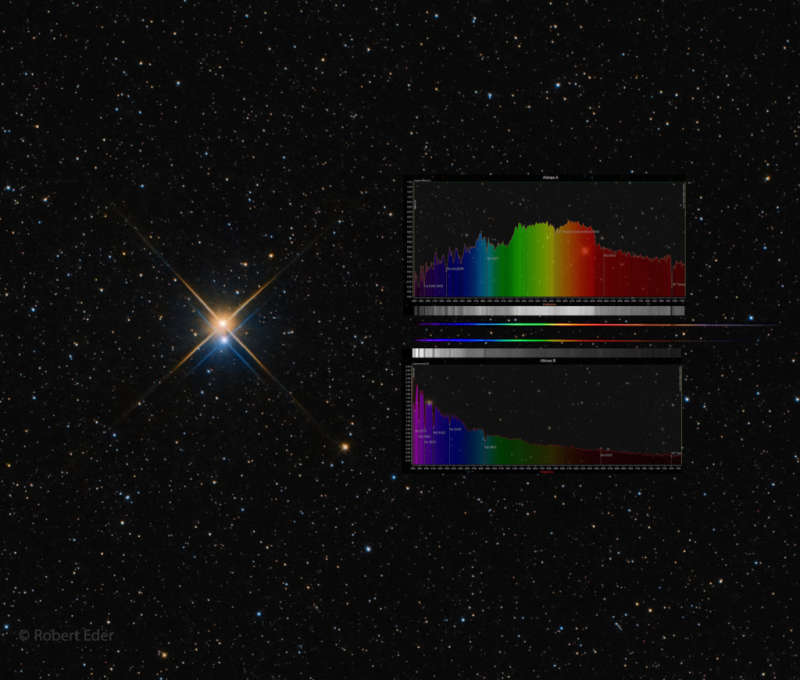Credit & Copyright: Robert Eder
Explanation:
Beta Cygni
is a single bright star to the naked eye.
About 420 light-years away
it marks the foot of the Northern Cross, famous asterism in
the constellation Cygnus.
But a view through the eyepiece of a small telescope will transform it
into a beautiful double star, a
treasure
of the night sky
in blue and gold.
Beta Cygni is
also known as Albireo,
designated Albireo AB to indicate its two bright component stars.
Their visually striking color difference is illustrated
in this telescopic snapshot,
along with their associated
visible spectrum
of starlight shown in insets to the right.
Albireo A, top inset, shows the spectrum of a K-type giant star, cooler than
the Sun and emitting most of its energy at yellow and red wavelengths.
Below, Albireo B has the spectrum of a main sequence star much hotter
than the Sun, emitting more energy in blue and violet.
Albireo A
is known to be a binary star, two stars together orbiting a
common center of mass, though the two stars are too close together
to be seen separately with a small telescope.
Well-separated Albireo A and B most likely represent
an optical double star and not a physical binary system
because
the two components have clearly different measured motions through space.
1999 2000 2001 2002 2003 2004 2005 2006 2007 2008 2009 2010 2011 2012 2013 2014 2015 2016 2017 2018 2019 2020 2021 2022 2023 2024 2025 |
Yanvar' Fevral' Mart Aprel' Mai Iyun' Iyul' Avgust Sentyabr' Oktyabr' Noyabr' Dekabr' |
NASA Web Site Statements, Warnings, and Disclaimers
NASA Official: Jay Norris. Specific rights apply.
A service of: LHEA at NASA / GSFC
& Michigan Tech. U.
|
Publikacii s klyuchevymi slovami:
al'bireo
Publikacii so slovami: al'bireo | |
|
Sm. takzhe:
| |
